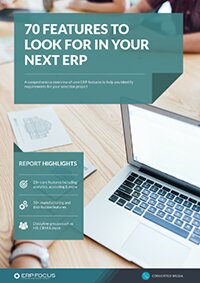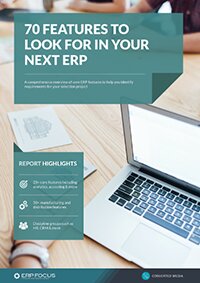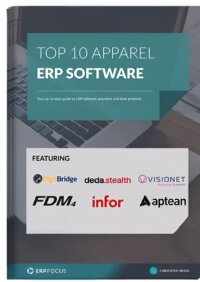From design to delivery: how can ERP aid fashion brands?
These are both exciting and challenging times for businesses in the fashion industry. A lot has changed in the past few years: Big disruptors such as the switch in consumer’s mentality into ‘see now, buy now, wear now’ and the influence of social media, which has now more power than big brands themselves, are still nowadays driving the change in the industry.
Fashion brands have become aware of how technology and innovation are key competitive differentiators to enable them to achieve a faster speed to market and insight throughout all steps of the supply chain. In this context, end-to-end ERP solutions fit for the specific needs of fashion and apparel companies can provide a holistic view of business processes. Why choose enterprise resource planning systems and not any other solution? ERP benefits fashion and apparel companies throughout all their key business processes, from design to delivery. Let’s dive into a few examples:
1. Business planning
Business planning is the first and foremost step of any apparel brand in the retail lifecycle. As of today, business plans tend to reside in large and complex spreadsheets, which are hard to share and update effectively. A centralized, software-based approach can improve utilization of resources and generate more efficient operations to hit profit targets, and thus getting the overall product’s lifecycle, beginning with the plan, off to a strong start.
2. PLM and design
The development of a fashion collection can begin up to 12 months prior to the “shop-floor delivery,” and from the initial designs only up to 30% of the sketches created by designers come to life and get delivered to the shop.
An integrated ERP can provide teams with one version of the truth, where designers have visibility to plans and price points, and at the same time, planners can see collections as they develop. This provides an excellent opportunity for teams to make course corrections and have a comprehensive view of information across fashion seasons.
3. Inventory management
To meet the demand in today’s omnichannel market, brand owners and fashion retailers (as well as those working in the wholesale industry) need an accurate view of their inventory position in order to optimize stock levels across all channels. Manually tracking items and collections across online and offline channels can cause errors and miscalculations that can eventually lead to profit loss.
However, integrated ERP systems improve accuracy and transparency, allowing businesses to keep tabs on stock levels across all channels and act swiftly on overstock situations.
4. Retail operations
In the final leg of the product cycle of fashion brands, we see how the centralized nature of ERP systems is also vital for managing retail operations. Retail operations involve key activities such as end-of-season planning, logistics, and markdown modeling. In order to meet customer’s demands and master true omnichannel apparel retailing, team members need access to a single version of the truth and clear guidance on operations such as price adjustment and moving merchandise from one store to another.
Compare the top fashion and apparel ERP systems with our free ERP comparison tool
Sticking to traditional processes and legacy software is not an option for fashion brands anymore if they aim to survive the drastic changes the industry is going through. Investing in ERP solutions tailored to their specific industry provides fashion brands with the insight and control they need to fully streamline their business.
Free white paper

70 features to look for in your next ERP
A comprehensive guide to help you identify requirements for your ERP selection

Featured white papers
Related articles
-

Top apparel ERP systems for your software shortlist
These are an excellent starting point for anyone looking for a fashion industry ERP
-

CMMC Compliance: What Aerospace and Defense Manufacturers Need to Know
Key insights on CMMC compliance, deadlines, and securing DoD contracts with CMMC 2.0 certificatio...


